
Water determines the Great Lakes Region’s economic future
Climate change, geopolitics and business opportunities power a blue economy
Curtains of wet snow are dropping from the sky, yet the front door and windows in Hal Wright’s home in the ghost town of Sandon, B.C., are wide open.
Glass lamps cast a cheery glow over Wright’s kitchen and living room, while an electric heater soothes the nip of an October evening in the Selkirk Mountains.
Wright, the proprietor of parts of the curio town near New Denver, is as conservation-minded as any Canadian concerned about climate change.
Under any other circumstances he would be switching off lights, sealing doors and taking pains to insulate his drafty house, built in the late 1800s in the heyday of the silver mining outpost — when it boasted 10,000 residents, two dozen saloons, scores of hotels, a hospital, jail cells, two railways and an embarrassment of brothels.
But Wright has an unusual problem. He and his partner Vida Turok, a former Nanaimo chocolatier, have so much electricity they could heat the outdoors all winter and still have power to spare.
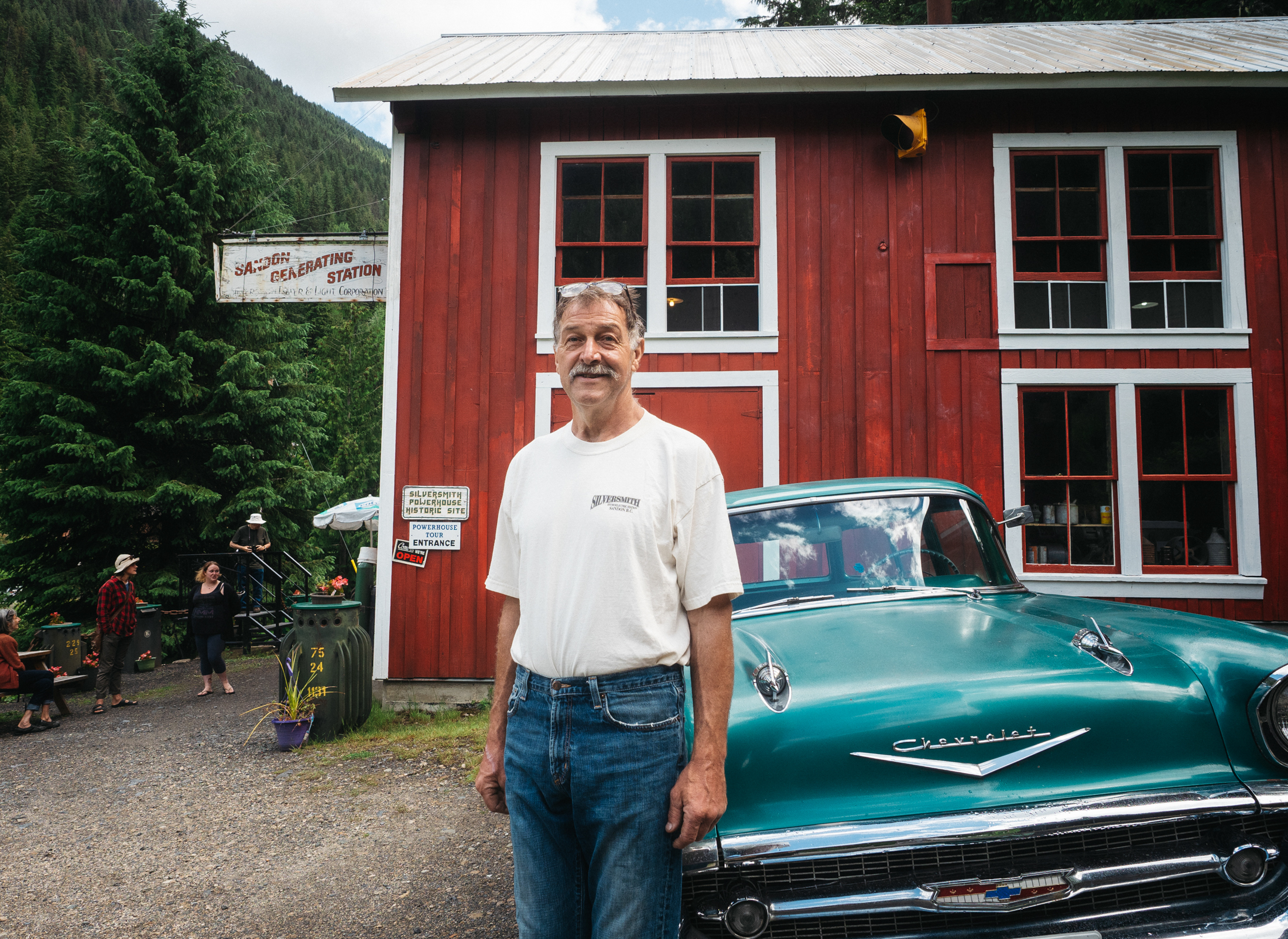
Hal Wright, owner of the the historic Silversmtih Power and Light hydro plant, poses outside the generating building in Sandon, B.C. Photo: Louis Bockner / The Narwhal
It’s Canada’s most environmentally friendly electricity, Wright points out: federally certified clean and green power from Sandon’s historic Silversmith Power & Light company, enough to fully power 440 B.C. homes year-round if it were operating at capacity.
“We get people from all over the world coming to see this,” says Wright, unlocking the door of the cherry red clapboard building that houses the Silversmith plant.
“It’s the gem of Sandon in so many ways … an engineering marvel.”
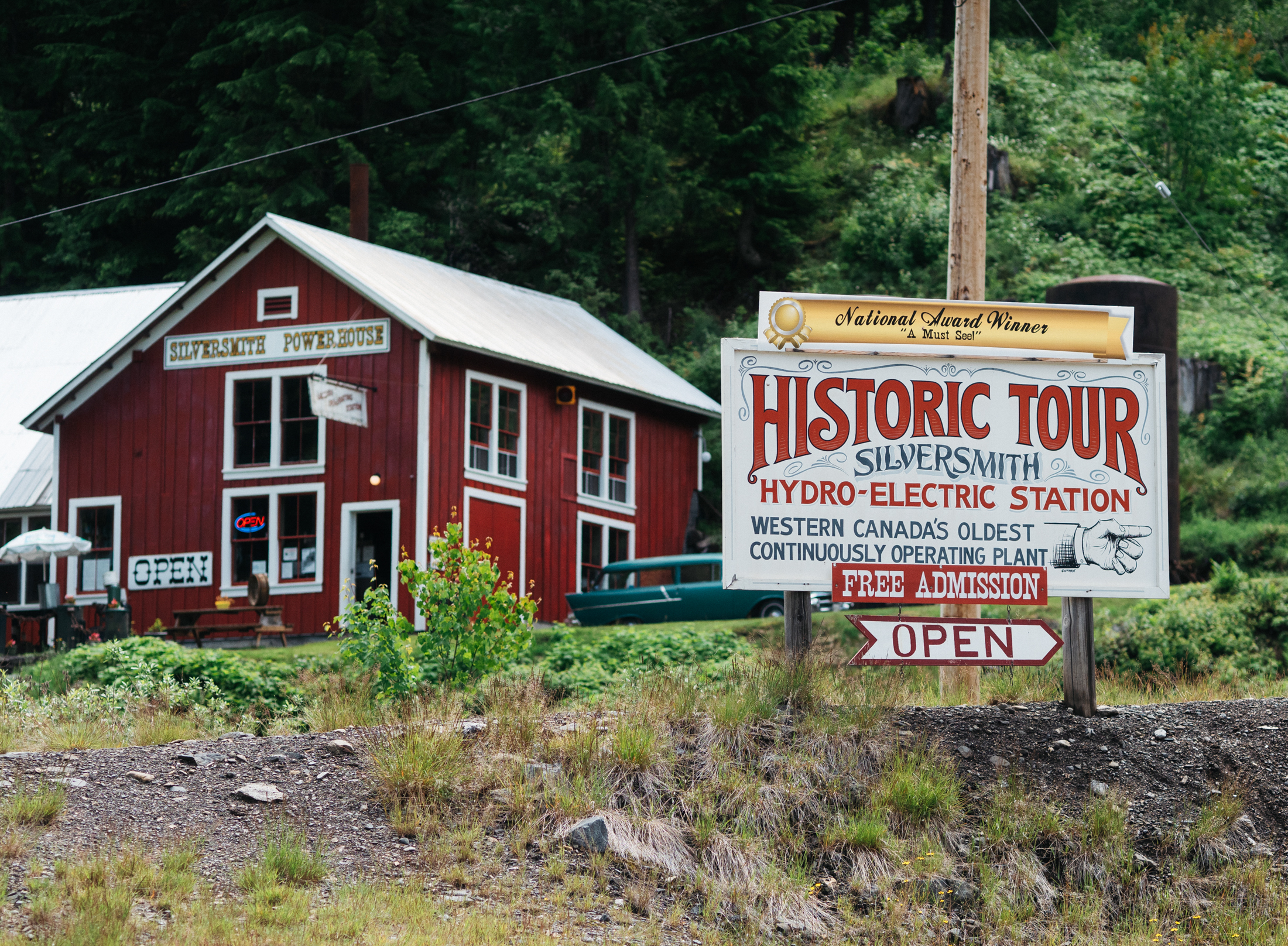
The Silversmith Power and Light hydro electric station in Sandon, B.C., is Canada’s oldest continually operating hydro plant. Photo: Louis Bockner / The Narwhal
The plant, which once powered Canada’s richest silver mine, the Slocan Star, hums with the sound of a Tesla-designed generator and a water turbine. Together they convert creek water tumbling down the Sandon mountain into electricity, then javelin it out of the building in a frothy waterfall.
When Wright bought Silversmith in 1996, the federal and B.C. governments seemed keen to support green energy projects — projects that are environmentally friendly as well as low in carbon — and the future for Silversmith and Sandon seemed bright.
Wright dreamed of turning the ghost town into a national historic site to showcase the development of electricity, restoring its tumbledown wooden and brick buildings with income from Silversmith’s power sales.
He and his family borrowed money to fix up the plant and connect it to the BC Hydro grid, which Wright says helped to fix power quality issues in the nearby Nakusp and New Denver areas. The family also spent $3 million over 20 years to replace the wooden pipe that drops water 186 metres down the mountain to Silversmith, he notes.
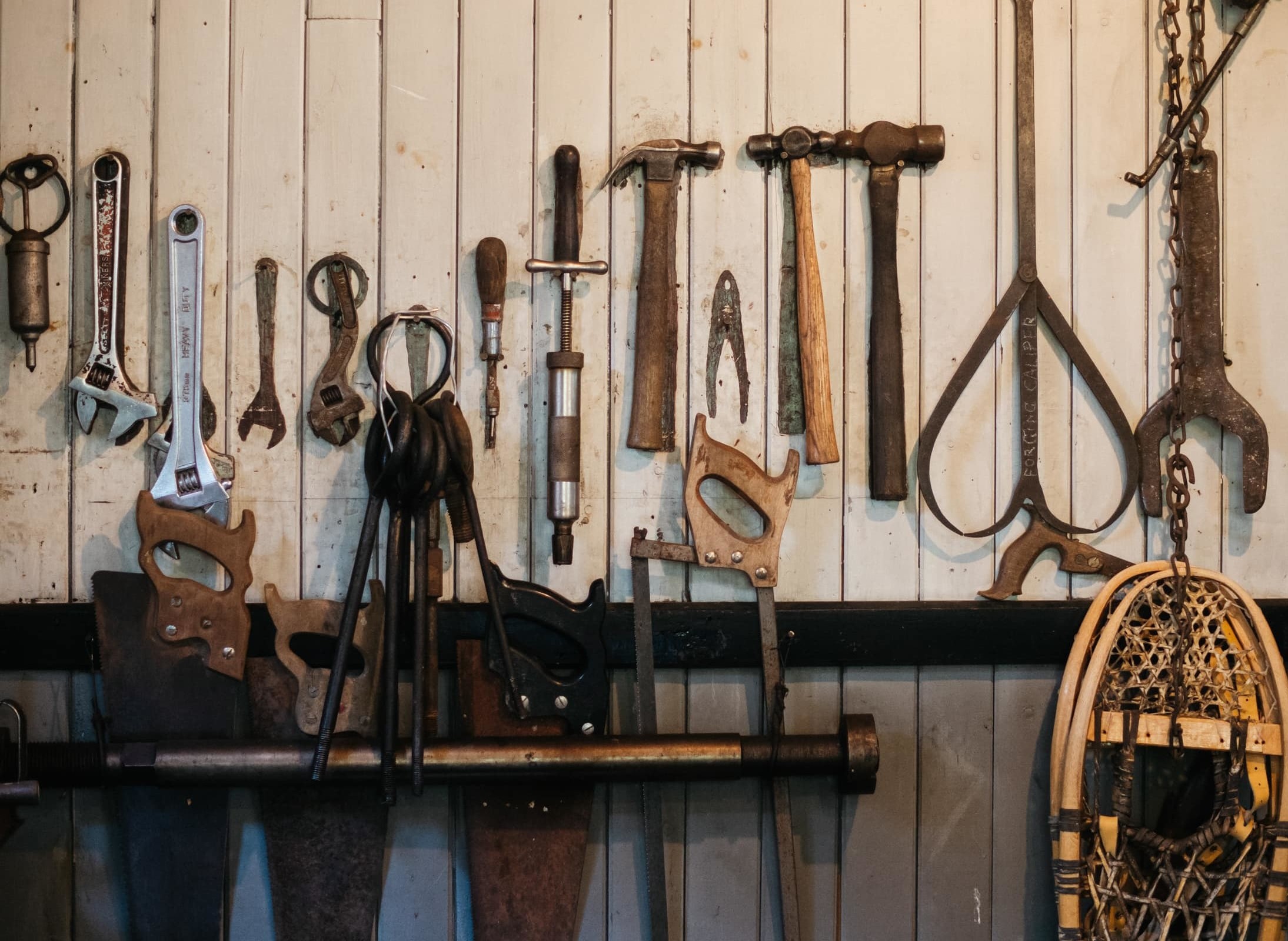
Historic and modern tools decorate a wall of the Silversmith plant building, built in the late 1800s. Photo: Louis Bockner / The Narwhal
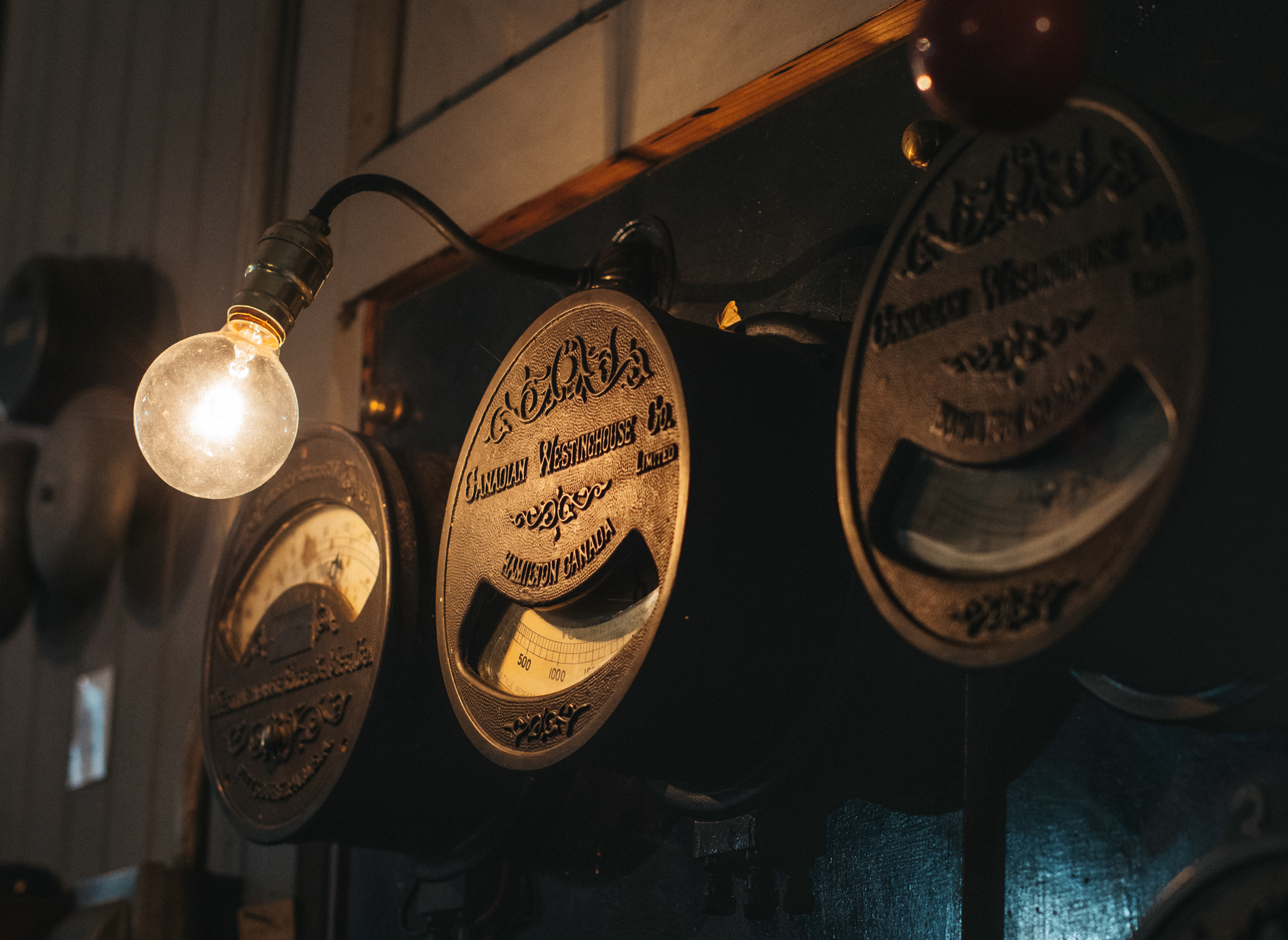
Old gauges, once essential facets of the generating station, now act as decoration and add to the sense of history in Silversmith, one of the country’s oldest hydro power plants. Photo: Louis Bockner / The Narwhal
“We went out on a limb like we’ve never done before and we decided to give it a shot. We rehabilitated this whole plant. We became a reliable, certified producer … B.C. was going to start going green and we were going to be in on the ground floor and do the right thing. It was as much a moral decision as anything.”
Today, Wright’s hopes of fully restoring the town are faltering, even though Sandon draws 40,000 visitors each year to learn about the little city that survived a flood and a fire but couldn’t overcome falling silver prices.
After years of haggling, Wright says BC Hydro will only buy less than one-quarter of the electricity Silversmith can produce, in a deal struck under the previous BC Liberal government.
Wright, who works as a truck driver and heavy-duty mechanic in addition to curating his ghost town buildings, says the power sale provides enough revenue to keep Sandon running as a bare-bones operation as long as he takes outside work to pay the bills and put groceries on the table.
But now Wright worries BC Hydro will cut him off altogether as soon as his energy purchase agreement expires. Without that source of revenue, he says Sandon may have to shut down.
“It’s a forced slow and painful death.”
Silversmith is a utility that predates BC Hydro and so doesn’t properly fit under the category of an independent power producer.
It’s a “historical oddity,” Wright explains. “I can’t just say it’s not economic anymore and shut the switch off. We would have to go through formal hearings, apply for abandonment if we wanted to abandon the operation.”
Yet, that doesn’t guarantee Wright will be paid a decent price for what Silversmith produces.
“There’s no correlation between the obligation to produce power and fair compensation.”
After Silversmith supplies electricity to about a dozen buildings in the Sandon area, Wright says he has to sell most of the rest of Silversmith’s power “for next to nothing,” to Powerex.
Powerex is a wholly-owned corporate subsidiary of BC Hydro that makes money by selling B.C.’s electricity to the U.S. and Alberta and buying cheaper electricity.
Clean B.C. is quietly using coal and gas power from out of province. Here’s why
Powerex’s CEO Tom Bechard, Wright notes, is the highest paid executive in B.C.’s public sector, taking home almost $1 million in pay and benefits last year.
That irks Wright, who has taped a printout of a newspaper story about Bechard’s salary to the wall of the powerhouse. But when he considers how much money Powerex is making from Silversmith’s electricity it rankles him all the more.
“There isn’t enough money to cover costs,” he says. “That’s my bone of contention.”
Since the early 2000s, according to Wright, Powerex has paid on average less than $20 per megawatt hour for Silversmith’s power — “well below the cost of production,” he says.
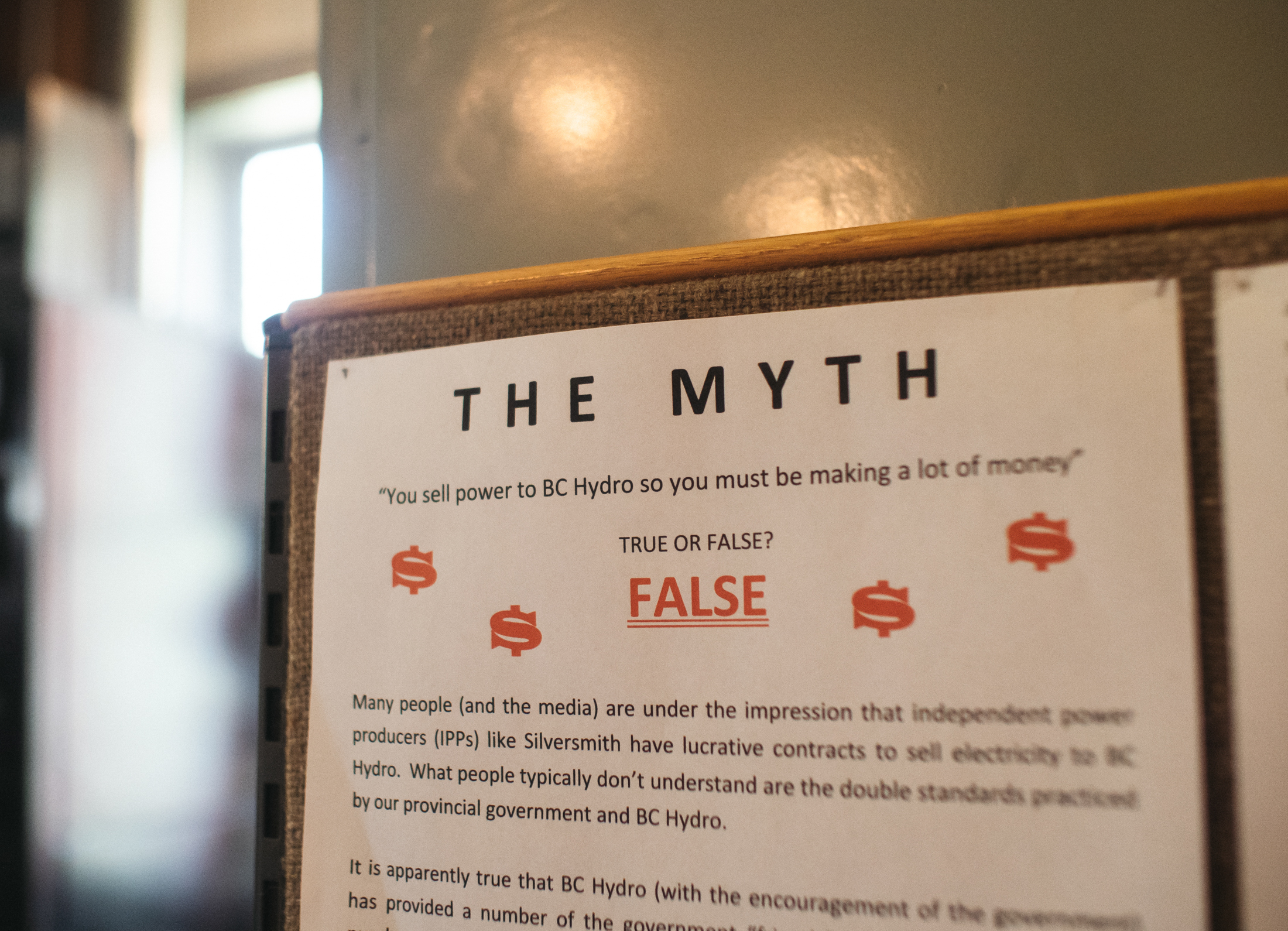
A posting inside the Silversmith Power and Light generating building explains why selling power to BC Hydro doesn’t equate to making a profit. Photo: Louis Bockner / The Narwhal
“It’s a total disincentive to produce as much as we can,” says Wright, who keeps the Silversmith plant running at about 60 per cent of its capacity.
“We’re selling premium power in a junk market.”
Powerex exports Silversmith’s power for substantially more money — receiving an average $87 per megawatt hour for power exports to 12 U.S. states in 2018, according to data from the Canada Energy Regulator.
Powerex, whose annual net income ranged from $59 million to $436 million from 2014 to 2018, imports electricity from most of those same jurisdictions, including gas and coal-fired power.
Similarly, Powerex imports cheap power from Alberta including, potentially, coal and gas-fired power.
“When you think of a green producer not producing what they could, and coal-fired power being injected into the same system, it just seems ridiculous,” Wright says.
“Why would you want to suppress the development of green hydro? B.C. should be building that as fast as we can.”
A confidentiality agreement, which Wright says he was compelled to sign in order to sell any power at all to BC Hydro, prohibits him from disclosing when his contract ends or what exactly he gets paid (even though he can disclose what he says is less than a $20 per megawatt hour average purchase price from Powerex). He does say, however, that the power he is able to sell to BC Hydro fetches a reasonable price.
“BC Hydro is a publicly owned corporation,” Wright points out. “It seems to me that anything involving the government should be transparent, with no exceptions … In my case, with my company, it’s my opinion that information should be available to everybody in the public, because it’s dealing with a public company.”
“I didn’t ask for secrecy and I want to make that clear … It’s BC Hydro who insists on it being secret. That’s our government agency saying that these things should be done on the QT, that’s just not right.”
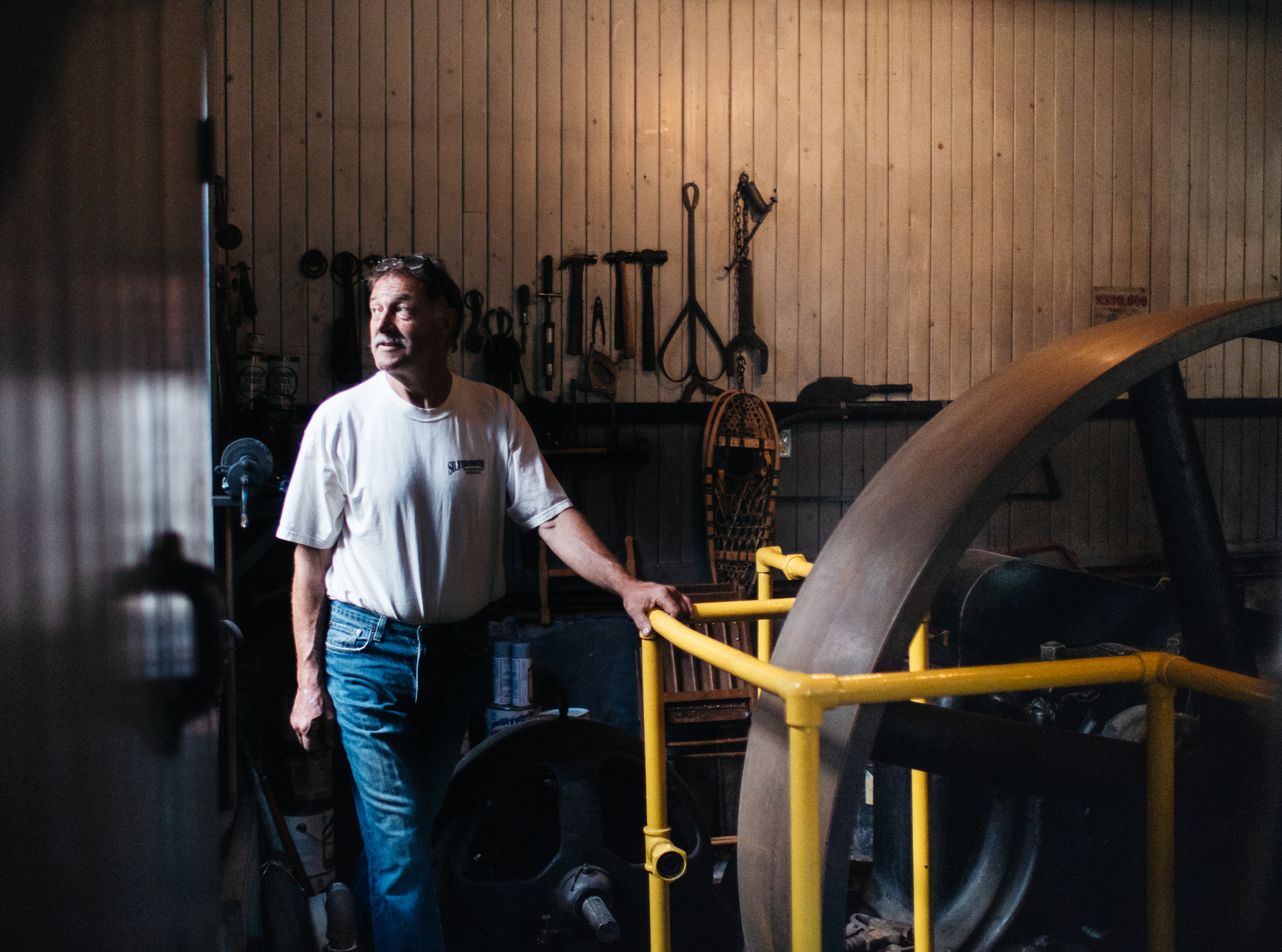
“I didn’t ask for secrecy and I want to make that clear,” Wright told The Narwhal. “It’s BC Hydro who insists on it being secret,” the Silversmith owner said about the small-scale hydro plant’s electricity purchase agreement with the Crown corporation. Photo: Louis Bockner / The Narwhal
Tall, loquacious, and dressed in an orange quilted jacket, work boots and jeans, Wright has the focused demeanour of a man with a passion.
He uses phrases like “the wild west” and “the Monte Carlo of Canada” to describe Sandon at its apogee, recalling some of the treasures he and his kids dug up over the years: antique gin and beer glass bottles, a Queen Victoria medallion, gold nuggets.
Some of the finds are on display in Sandon’s museum and in the squat, two-storey wooden firehall, court hall and city hall building that now houses a gift shop and the Prospector’s Pick café run by Turok, who is also the cook, cashier and Silversmith’s billing administrator.
Wright’s fascination with Sandon traces back to summer visits with his grandmother as a boy in the mid-60s. His grandfather, a magazine subscription salesman, had often overnighted in the mining outpost. Wright felt a deep connection to the place and, at 15, when an opportunity arose for him to apprentice as a mechanic at the Silversmith plant, he seized it.
Back then, in the early 1970s, Sandon was still an active silver mining town. A half dozen mines pockmarked the forested slopes of what is now known locally as the “valley of the ghosts.”
More than a decade later, in the late 1980s, Wright became Silversmith’s manager, running it for the Toronto-based Kam Kotia corporation, which later morphed into mining giant Gold Corp.
When it was no longer profitable to dig silver out of the mountains surrounding Sandon and mining ended, Wright and his family purchased Silversmith in 1996. They also bought some of Sandon’s historic buildings as they came up for sale.
Along with the buildings came other heirlooms. Today, a long-silent steam locomotive perches on rail tracks near the powerhouse while an eclectic collection of antique mining carts and machinery is strewn haphazardly about the town, leaving the impression that former residents scuttled away in a hurry. Vancouver’s original electric trolley buses line the main street, adding to the eerie atmosphere by advertising routes like Davie and Fraser, their seats devoid of passengers and drivers.
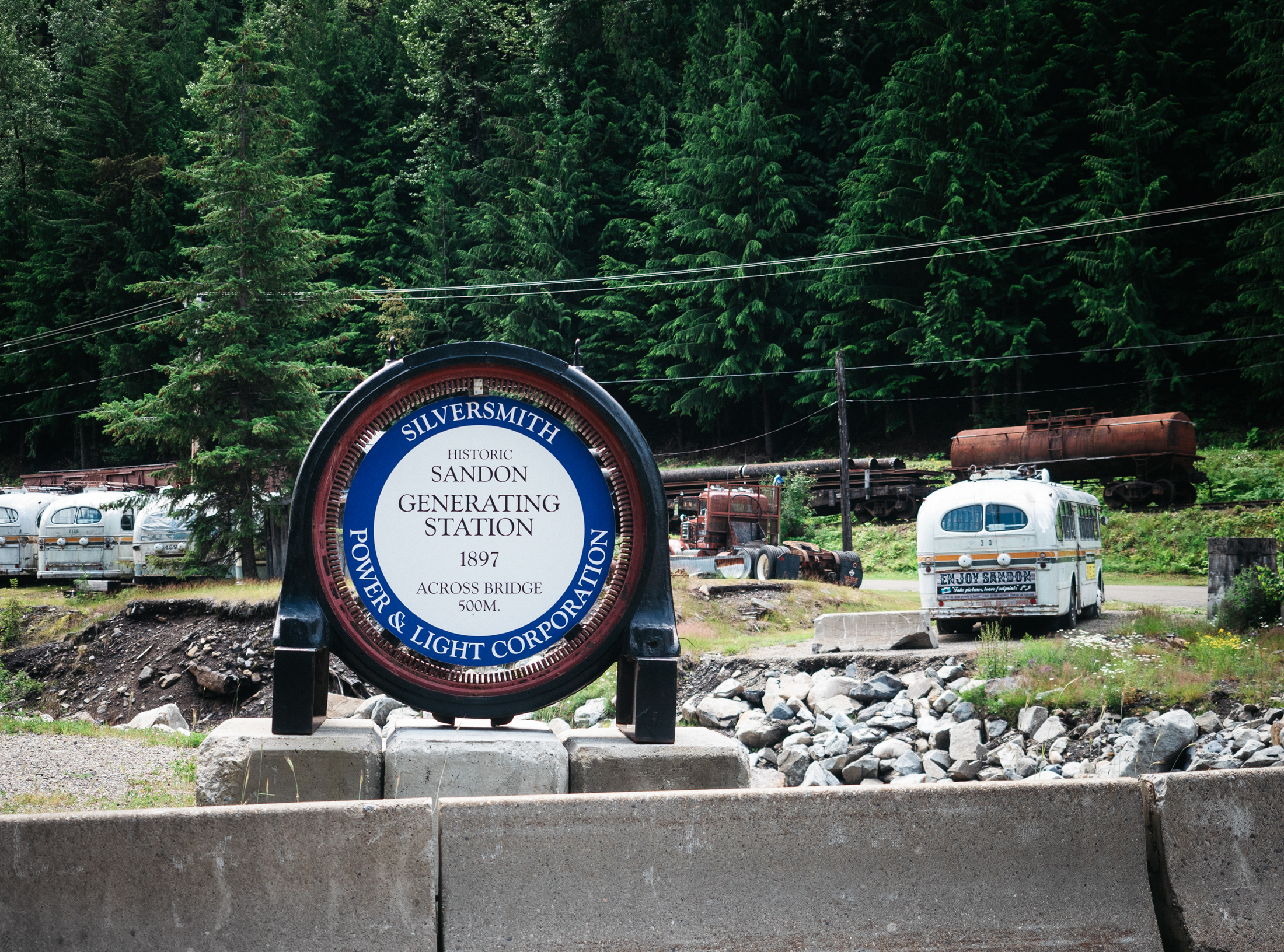
A sign welcomes visitors to the Silversmith plant. The old brill trollies in the background once ran in Vancouver, Calgary, Saskatoon, Winnipeg and Regina and are a draw for tourists. Photo: Louis Bockner / The Narwhal
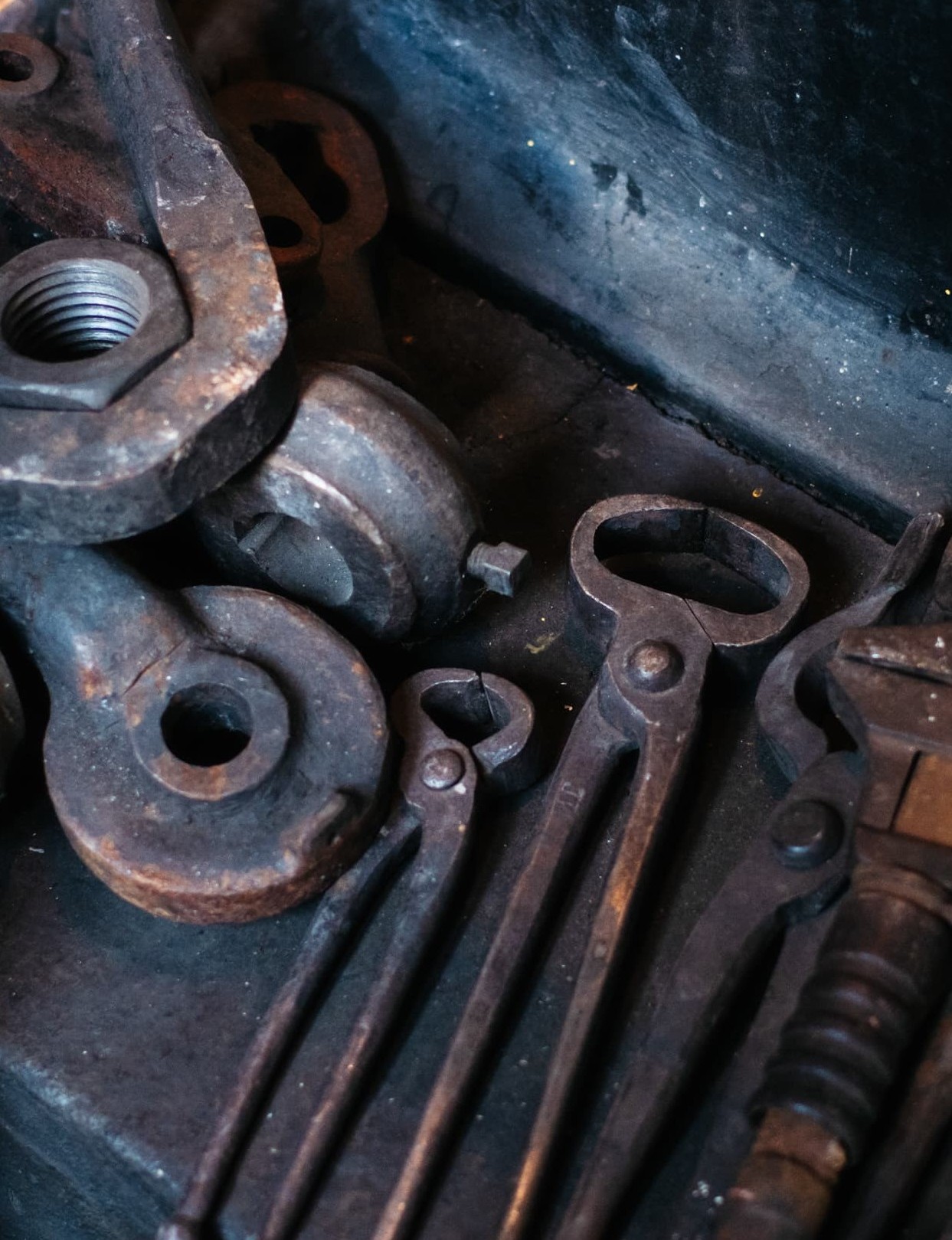
Old tools sit inside Sandon’s historic Silversmith Power and Light generating station. Photo: Louis Bockner / The Narwhal
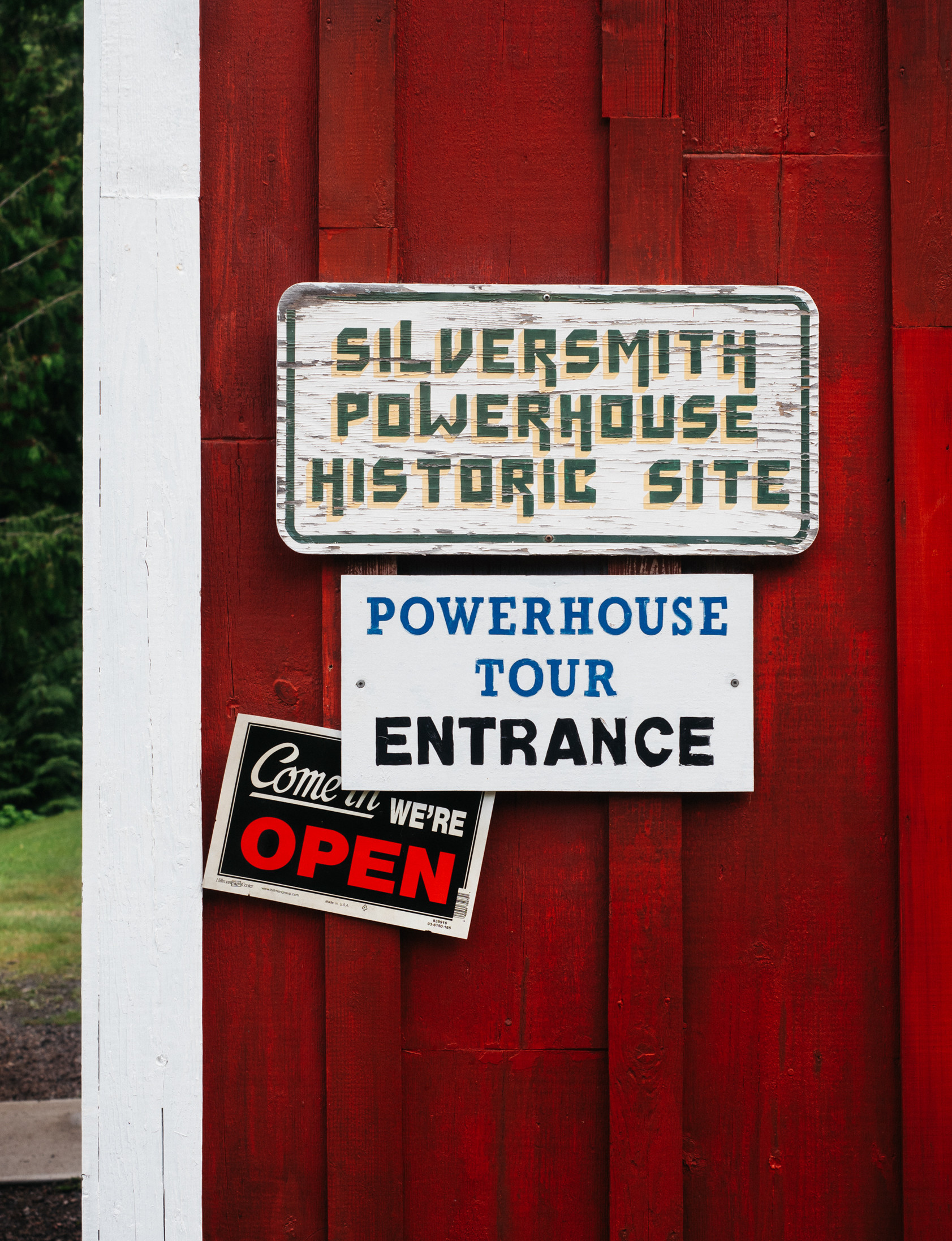
The Silversmith Power & Light plant is a popular tourist attraction for Sandon, B.C. which has just 20 full-time residents. Photo: Louis Bockner / The Narwhal
For Wright, choosing green energy is like going to the supermarket for vegetables or salad fixings.
“There’s ordinary carrots in your grocery store and then there’s organic carrots,” he explains. “You can’t call them organic unless they meet a stringent set of requirements. Electricity’s no different.”
He points to a small certificate encased in a wooden frame, hanging on Silversmith’s wall above collections of century-old tools and other antiques. Nearby is a wall unit with shiny narrow silver boxes and an olive-green hardhat that looks like a relic from World War 11 — the first rechargeable lanterns for miner’s hats, Wright says proudly.
The certificate, dated June 15, 1999, licenses Silversmith to display the federal EcoLogo — three intertwined doves with a green maple leaf.
Much like the Fair Trade logo that grants certified coffee producers the right to affix a Fair Trade label to their beans, or the Energy Star decal on certified energy-efficient appliances, the EcoLogo is part of an eco-labelling scheme to help consumers identify environmentally preferable services and products.
Established in 1988, the federal government’s Environmental Choice Program certifies more than 300 categories of products, including electricity.
“We’ve been a certified producer since 1999 and we have never sold a single kilowatt [that’s been recognized as] green electricity,” Wright notes, adding that it’s not for lack of trying.
To achieve EcoLogo certification, Silversmith had to pass a stringent audit, verified by a third party.
EcoLogo standards include the proviso, for instance, that electricity must be produced in a way that protects against biodiversity loss and does not adversely impact the environment. That’s a standard large hydro dams can’t begin to meet, Wright notes.
The new Muskrat Falls dam in Labrador, for example, will contaminate traditional Aboriginal foods such as seals and land-locked salmon with methylmercury and eliminate bird-breeding wetlands and habitat for at-risk species such as caribou, including for the highly endangered Red Wine Mountain caribou herd.
And the Site C dam currently under construction on B.C.’s Peace River, for its part, will destroy habitat for more than 100 species listed as vulnerable to extinction, also poisoning bull trout and other fish with methylmercury.
But Wright says his EcoLogo certificate is only “wallpaper” now and “hasn’t done a lick of good,” since B.C. quietly did away with plans for a green power standard.
Unlike in Alberta, he points out, BC Hydro customers don’t have an option to purchase green power.
“B.C. was going to have a green tariff so that citizens and businesses could buy green electricity,” explains Wright.
“How would you feel if the government just decided they were going to legislate away organic certification for food? It’s a product and it’s got an environmental rating and, if all of a sudden you can call anything organic, it doesn’t matter what chemicals you use, the public would be outraged. So what they did is they just eliminated the organic option. We don’t have it in B.C. We’re forced to sell in the generic mix.”
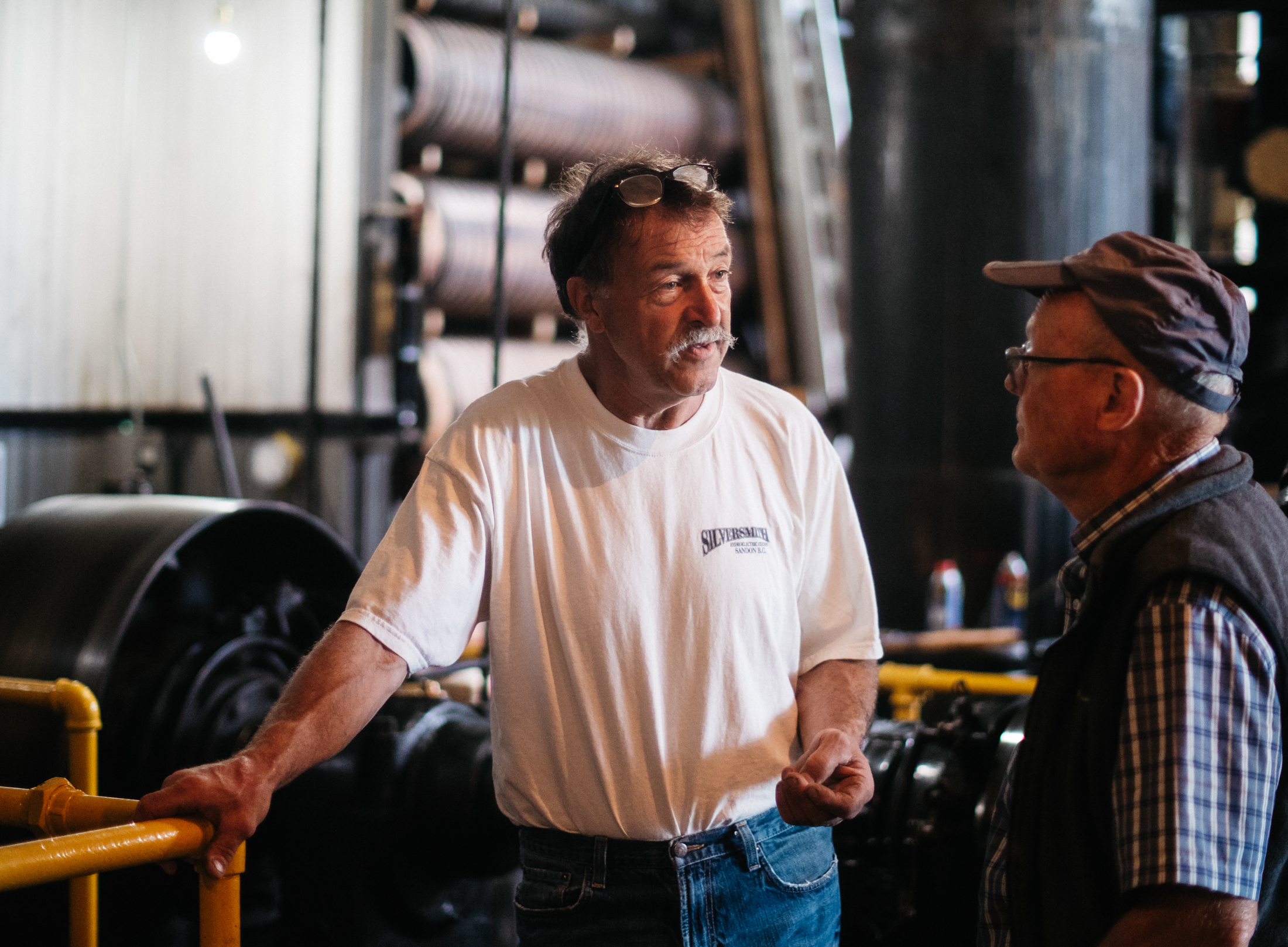
Wright explains the hydro system’s history to a touring visitor. Photo: Louis Bockner / The Narwhal
The difference between clean energy and green energy is “poorly understood,” Wright says. Even politicians frequently get it wrong.
In August, for example, when the B.C. and federal governments signed an agreement that will see federal taxpayers subsidizing B.C.’s LNG industry through construction of new transmission lines, B.C. Premier John Horgan described the deal as “taking advantage of the abundant clean, green energy in B.C.” — a thinly disguised reference to the Site C dam, greenlighted by his NDP government.
But B.C., which gets the bulk of its power from large hydro dams, produces very little green energy. According to Natural Resources Canada, only 1.4 per cent of B.C.’s energy comes from wind, compared to seven per cent in Alberta and 98 per cent on Prince Edward Island. Solar comprises such a negligible amount of B.C.’s total energy production it’s not even counted in NRCan’s tally and geothermal has never gotten off the ground in the province.
Sara Hastings-Simon, a research fellow at the University of Calgary who focuses on low-carbon energy transitions, says there’s no one official definition of a green energy project.
“It kind of comes down to what certification you’re using or, if it’s a legal requirement, what does the legislation say?” Hastings-Simon says in an interview.
“Wind and solar, I think it’s fair to say, could be universally accepted under all definitions … Large hydro is increasingly excluded.”
In practice, Alberta is the only place in Canada where commercial and institutional hydro customers can buy green energy directly from developers, according to Hastings-Simon.
“Alberta is unique in Canada, although not in North America,” says Hastings-Simon, who was previously the managing director of the Pembina Institute’s Alberta clean economy program.
Alberta is different, she says, because it has “an open market that people can compete in” to produce and sell electricity.
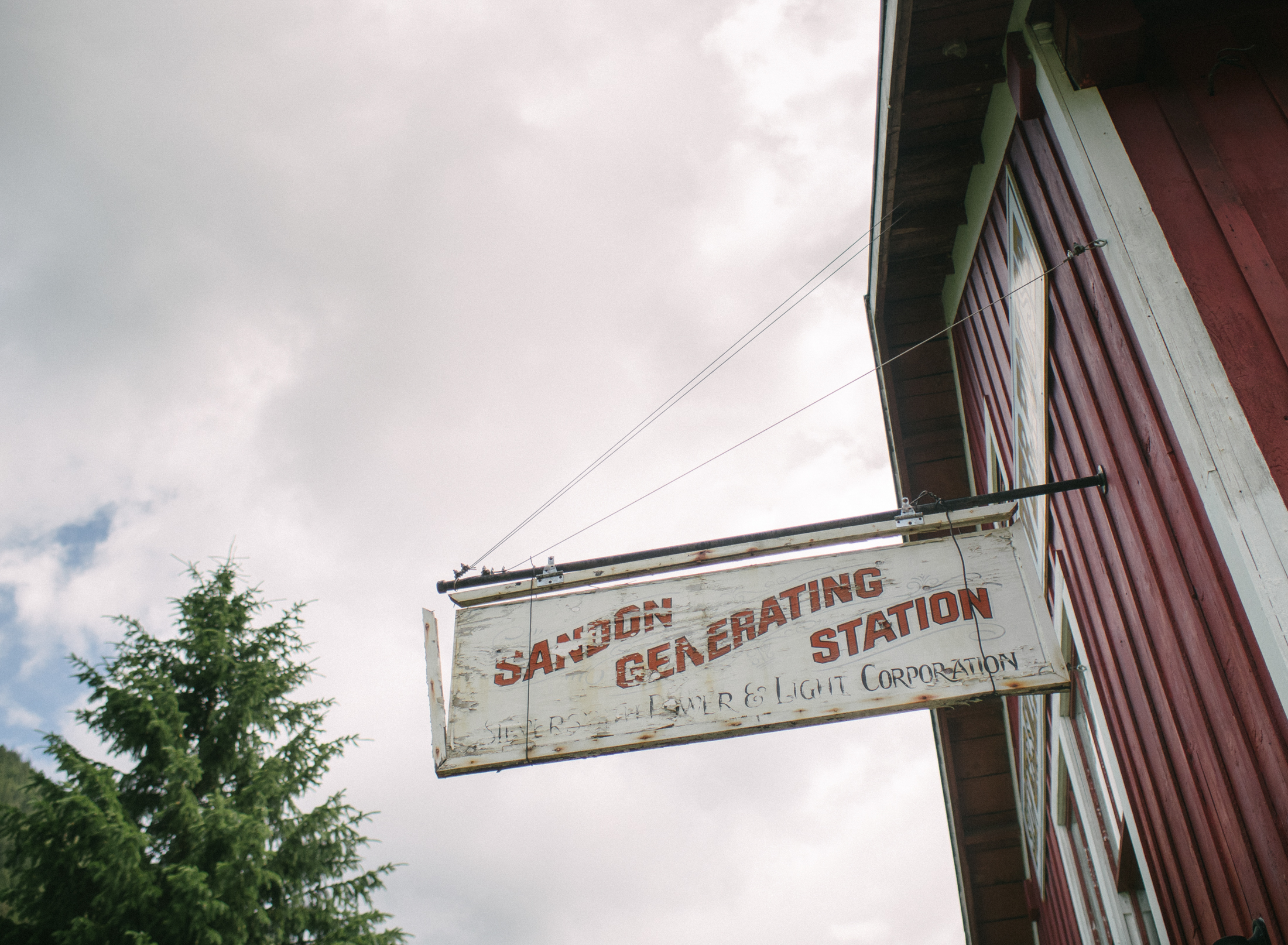
The sign of the Silversmith Power & Light plant shows its age. The hydro facility originally started producing power in 1897 when Sandon was a bustling mining centre. Photo: Louis Bockner / The Narwhal
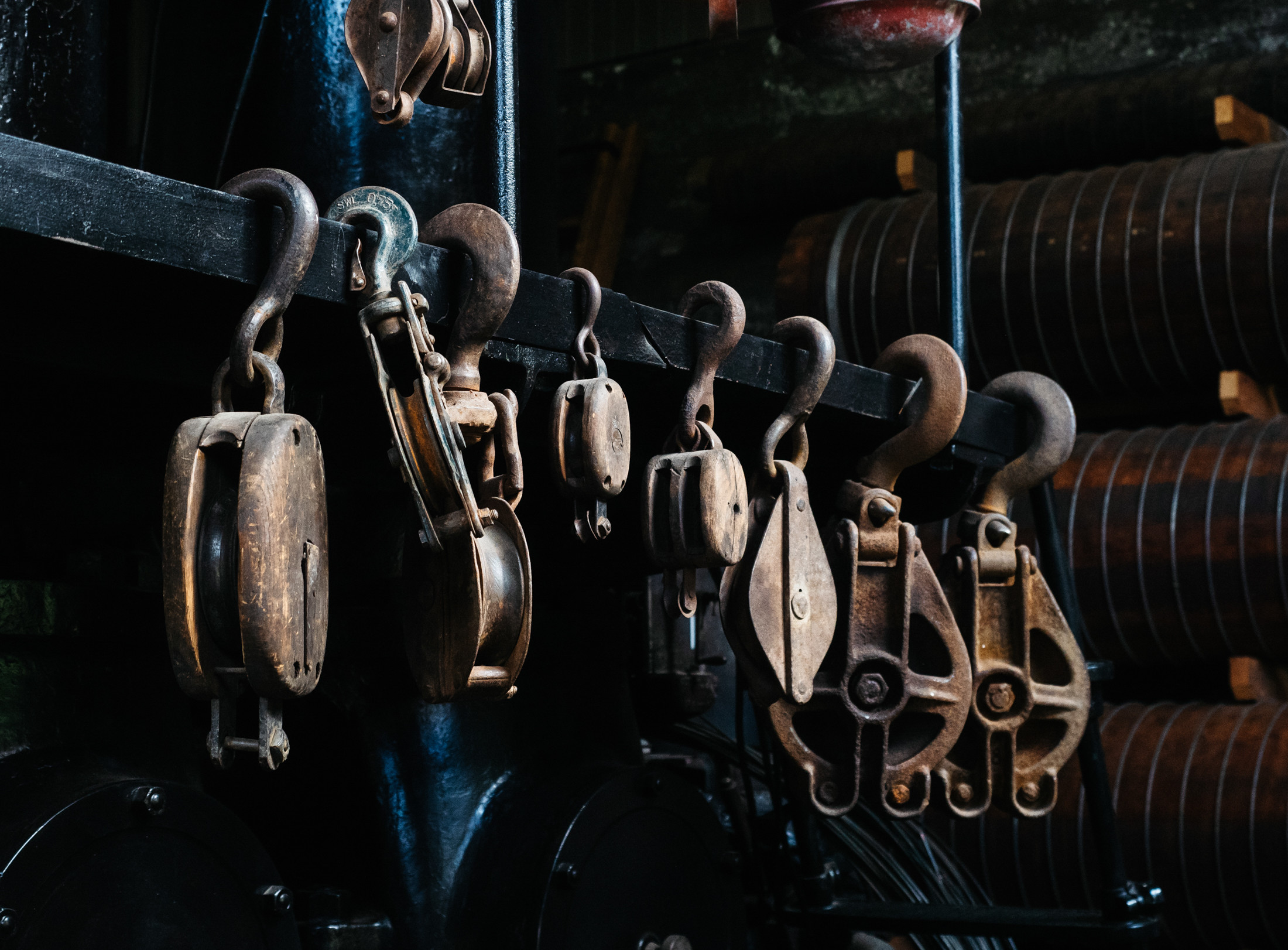
Old pulleys decorate a beam at Silversmith. Photo: Louis Bockner / The Narwhal
By comparison, other provinces have Crown corporations — BC Hydro or Manitoba Hydro, for instance — that control both energy generation and its sale.
“In B.C. when you want to buy power, you don’t have a choice,” Hastings-Simon says.
“On the gas side there are some competitive retailers but on the electricity side you have your designated, regulated electricity utility depending on where you live — and that’s the only one that can sell you electricity.”
“In markets that have competitive retailers you have a choice. It’s like anything else, like buying a car. You can go wherever you want and they all have different offerings, and you can choose which you want.”
Alberta homes and businesses can also opt to buy power from companies like Bullfrog Power, which gets its green electricity from a blend of wind and low-impact hydro power, much of it produced regionally.
“You’re still getting your regular electricity bill,” explains Hastings-Simon. “But then what Bullfrog is doing is making sure that there’s power equal to the amount of power you’re using that’s being added to the grid.”
In October, Alberta announced two new large wind projects. One company linked to American investor Warren Buffet will build a $200 million wind farm in southeastern Alberta that will produce 118 megawatts of power — enough, according to the company, to supply the equivalent of 79,000 homes. The company has signed a long-term power purchase agreement with a large unnamed Canadian corporate partner.
“That’s something we’re seeing becoming quite big in the U.S. It’s just starting to take off in Canada,” says Hastings-Simon, whose work with Pembina focused on helping to expand that market in Alberta.
“Again, Alberta is really the only market today where you can easily sign those kinds of agreements. That kind of open market doesn’t exist, for example, in B.C. or in Saskatchewan. There’s nothing in the infrastructure itself that prevents it. It’s more the structure of the electricity system itself.”
BC Hydro avoids using the term “green energy” to describe power produced in B.C., instead describing power from the province’s fleet of large hydro dams as “clean” and “renewable.”
But even the “clean” moniker is now under scrutiny.
Martin Mullany, interim executive director of Clean Energy BC, points to methane emissions generated by large dams like Muskrat Falls or Site C.
“I’m not a big fan of large-scale hydro because I do think there are big environmental issues,” says Mullany, a director and CEO of Bridge Power, a company with interests in B.C. that include five major wind farm projects.
According to a 2016 report by scientists, reservoirs behind dams emit 23 per cent of global emissions from methane, a greenhouse gas 84 times more potent than carbon dioxide.
Building large dams also requires huge amounts of cement, the source of about eight per cent of the world’s carbon dioxide emissions. In the case of the Site C dam, where the unstable slopes of the Peace River Valley present serious geotechnical challenges, more than two million cubic metres of concrete will be poured, according to BC Hydro.
In addition to greenhouse gas emissions, the Site C dam will flood 128 kilometres of the Peace River and its tributaries, a place Environment Canada calls a “hotspot” for biodiversity.
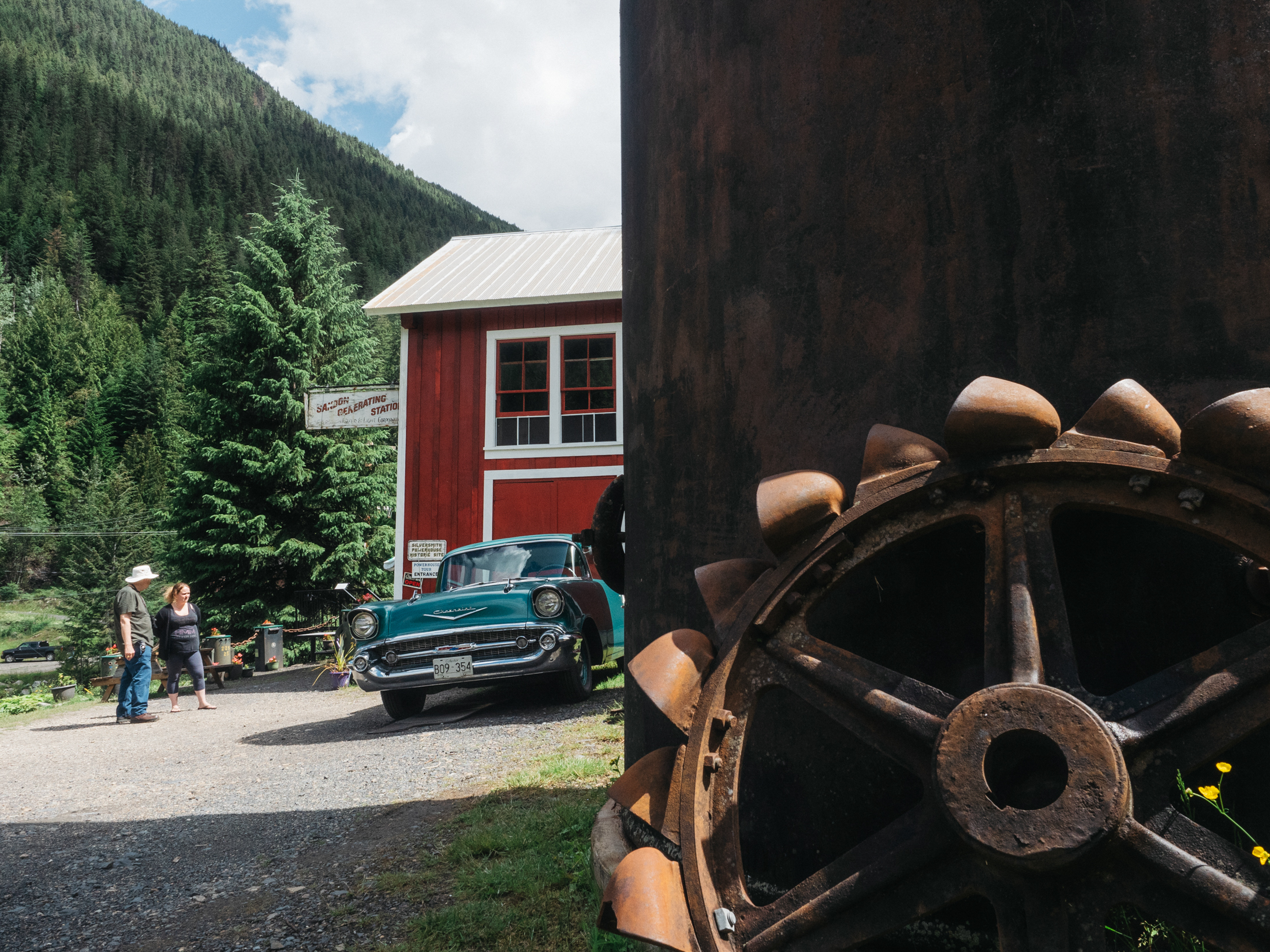
An old pelton wheel sits outside the Silversmith generating station. Photo: Louis Bockner / The Narwhal
Rick Hendriks, director of the Ontario-based consulting firm Camerado Energy, says the emphasis over the past decade has been on energy projects that reduce greenhouse gas emissions — easier to quantify, he points out, than biodiversity or social concerns.
“So we tend to look at energy projects through that lens first, and sometimes only through that lens. And that tends to obscure other impacts from projects that are also important.”
Environmental considerations such as biodiversity, wildlife impacts, fisheries habitat and shoreline ecosystems have taken a distant back seat, Hendriks notes.
But he says it’s not due to a lack of information, pointing to the Joint Review Panel that examined the Site C dam for the federal and provincial governments, which documented a slew of environmental concerns that cannot be mitigated.
“Biodiversity has sort of been the poor cousin of the environmental movement over the last decade,” Hendriks says. “We have serious biodiversity concerns throughout the world. And those would be captured more by green criteria, because they’re not captured by clean criteria.”
Hendriks foresees a time in the near future “when we will pivot back in the other direction” and embrace green energy.
“I say that because we’re now at a point where we can talk about affordable clean energy in every jurisdiction. In which case, then, the alternatives are very low [in] GHG emissions. “
BC Hydro confirmed it has an electricity purchase agreement with Silversmith “that gives us exclusive rights to all its surplus energy that is not serving its customers.”
“The majority of this surplus energy is purchased by BC Hydro and the remainder is sold to our power trading arm, Powerex Corp,” BC Hydro said in a statement emailed to The Narwhal.
But Wright says it’s usually the other way around, with the majority of Silversmith’s current power going — at a much lower rate — to Powerex for export.
“We’ve never been able to sell a reasonable amount of power for a reasonable price.”
He says he had a chance, about 15 years ago, to sell Silversmith’s power to Calgary Transit for $81 per megawatt hour but BC Hydro wouldn’t let him use provincial power lines even for a fee.
Today, Wright says he would be content with $80 per megawatt hour for Silversmith’s energy — considerably less than the $100 per megawatt hour that B.C. Energy Minister Michelle Mungall said earlier this year that BC Hydro pays independent power producers on average.
It’s also notably less than the $99 per megawatt hour that BC Hydro pays for excess power from home solar installations or the $120 per megawatt hour that independent energy experts estimate the over-budget Site C dam will cost.
Earning a “fair price” for Silvermith’s power in B.C. would make it possible to get a bank loan to bring the plant back up to its full production capacity and to fix up the ghost town, Wright says.
“This needs to be a national historic site.”
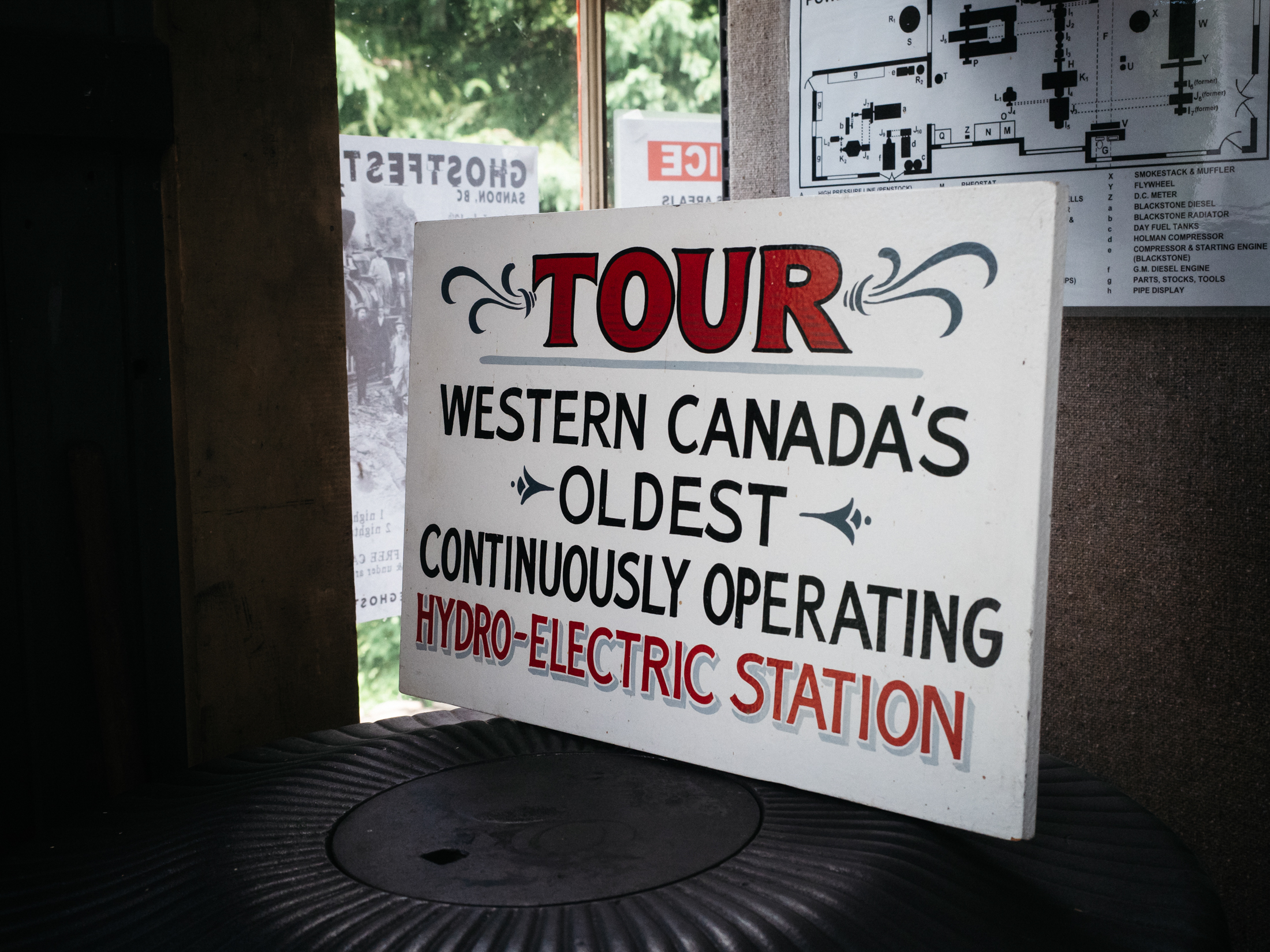
In the 1890s Sandon became the first place in B.C. to offer all of its residents ‘state of the art’ electrical service. Photo: Louis Bockner / The Narwhal
Walter Popoff, the regional district director for the central Kootenay area that includes Sandon, says the district is launching a heritage directory that will include Sandon and the Silversmith power plant, which he describes as a “valuable” heritage asset.
“Sandon is a historical site and I would like to see it developed,” Popoff says. “It should be developed in a similar fashion to Barkerville.”
To help save Silversmith and Sandon, Wright hopes to create a B.C. consumer demand for green electricity, district by district, starting with the Kootenays.
“This is the model of the past but in many ways it’s also the model of the future. You can generate so much power and have very little environmental impact … bigger is not better.”
“We might be the catalysts to start a bit of a groundswell,” Wright says, pointing to Alberta as an example.
“You can sell green power in Alberta and you can purchase it, which is ironic considering we think they’re backwards because they’re the fossil fuel centre of our country.”
“But in terms of energy policy they’re way ahead of us.”
Get the inside scoop on The Narwhal’s environment and climate reporting by signing up for our free newsletter. On a warm September evening nearly 15...
Continue reading
Climate change, geopolitics and business opportunities power a blue economy

10 billion litres of sewage are dumped into Winnipeg’s lakes and rivers each year. Some...

Court sides with Xatśūll First Nation, temporarily halting Mount Polley mine waste expansion
